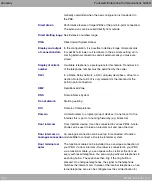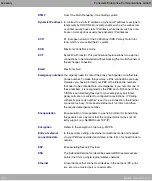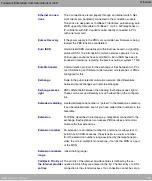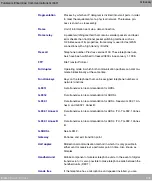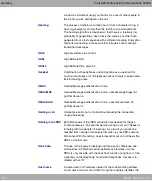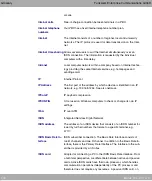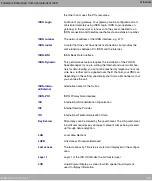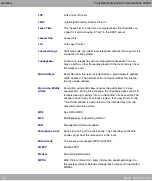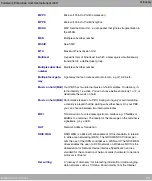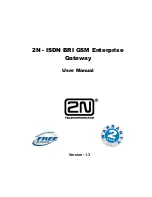
Open Shortest Path First
Outgoing extension
number signal
The "outgoing extension number signal" is intended for internal con-
nections on the point-to-point to which an explicit extension number
was not assigned. When an external call is made, the extension
number entered under Outgoing Extension Number Signal is also
transmitted.
If you have not suppressed transmission of your telephone number,
and the telephone of the person you are calling supports the CLIP
function, the person you are calling can see the telephone number
of the connection you are calling from on their telephone display.
This telephone number transmitted during an external call is called
the outgoing telephone number.
Packet switching
Password Authentication Protocol
The call is held temporarily in the exchange. The main difference to
on hold: The call is interrupted, the receiver can be replaced. Can
be used for brokering. Possible in T-Net, T-ISDN and PBXs. The ter-
minal must have MFC and the R key.
Private Branch Exchange
The features offered by a PBX are manufacturer-specific and enable
operation of exchanges, free internal calls, callback on busy, and
conference calls, among other things. PBXs are used e.g. for office
communication (voice, text and data transfer).
Private Branch Exchange (PBX)
Private Automatic Branch Exchange
A point-to-point ISDN access includes a PBX number and an exten-
sion numbers range. The PBX number is used to reach the PBX. A
certain terminal of the PBX is then dialled via one of the extension
numbers of the extension numbers range.
The PCMCIA (Personal Computer Memory Card International Asso-
ciation) is an industry association founded in 1989 that represents
credit card-sized I/O cards such as WLAN cards.
Abbreviation for pulse dialling method. Conventional dialling proced-
ure in the telephone network. Dialled numbers are represented by a
defined number of dc impulses. The pulse dialling method is being
Funkwerk Enterprise Communications GmbH
Glossary
bintec Rxxx2/RTxxx2
553


